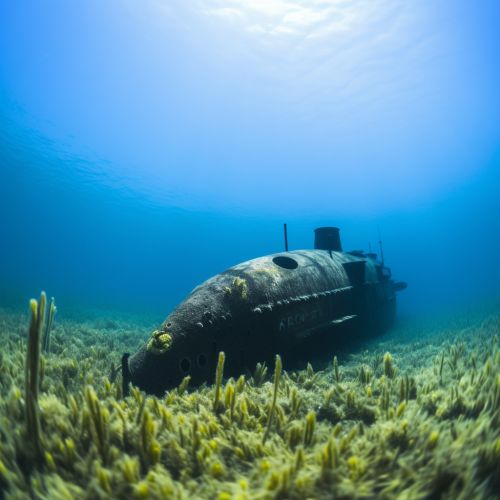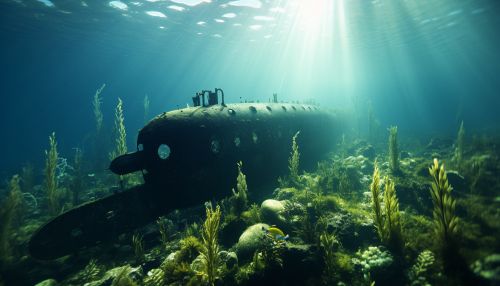U-boat
History
The term U-boat is derived from the German word "Unterseeboot," which translates to "undersea boat." This term was used to refer to military submarines operated by Germany, particularly in the First and Second World Wars. Although several nations used submarines during these conflicts, the U-boat has become synonymous with the German submarine force due to its significant impact on the outcome of the wars.


The development of the U-boat began in the late 19th century, with the German Imperial Navy commissioning its first U-boat, the U-1, in 1906. The U-1 was primarily used for training and experimentation, but it laid the groundwork for the development of more advanced U-boats that would play a crucial role in the upcoming wars.
First World War
During the First World War, U-boats were primarily used to enforce a naval blockade against enemy shipping. The strategy was to sink merchant ships heading to enemy ports, thereby cutting off essential supplies. This unrestricted submarine warfare was a significant factor in the United States' decision to enter the war in 1917.
Interwar Period
The Treaty of Versailles that ended the First World War imposed severe restrictions on the size and capabilities of the German navy, including a complete ban on U-boats. However, in the early 1930s, Germany began to secretly build new U-boats in violation of the treaty. This clandestine rearmament was part of a broader effort by the Nazi regime to rebuild Germany's military capabilities in preparation for the Second World War.
Second World War
During the Second World War, U-boats were once again used to enforce a naval blockade against enemy shipping. However, the tactics and technology had evolved significantly since the First World War. The U-boats of the Second World War were larger, faster, and more heavily armed than their predecessors. They also employed sophisticated tactics such as "wolfpack" attacks, where groups of U-boats would coordinate their attacks on convoys of merchant ships.
Post-War Period
After the Second World War, the remaining U-boats were either scuttled by the German navy, seized by the Allies, or sunk in combat. Some were used for target practice, while others were studied for their technological advancements. Today, several U-boats are preserved as museum ships, serving as a reminder of the pivotal role they played in the two World Wars.
Design and Construction
U-boats were designed to operate both on the surface and underwater, with a double-hull construction that provided buoyancy when surfaced and protection when submerged. They were powered by diesel engines on the surface and electric motors underwater. The U-boats were equipped with torpedoes for attacking enemy ships and deck guns for engaging smaller or unarmed vessels.
Operational Tactics
U-boats operated using a variety of tactics, depending on the situation. The most common tactic was the "wolfpack" attack, where several U-boats would coordinate their attacks on a single convoy. This tactic was particularly effective in the North Atlantic, where convoys were often unprotected.
Impact on Warfare
The U-boat had a profound impact on naval warfare. It demonstrated the effectiveness of submarines as a strategic weapon, capable of disrupting enemy supply lines and forcing changes in naval tactics. The threat of U-boat attacks led to the development of new anti-submarine warfare techniques and technologies, including sonar and depth charges.
Legacy
The legacy of the U-boat is complex. On one hand, it is remembered for the devastation it caused, sinking thousands of ships and causing the loss of countless lives. On the other hand, it is recognized for its technological innovations and strategic impact, which have influenced the development of submarines in the post-war era.
